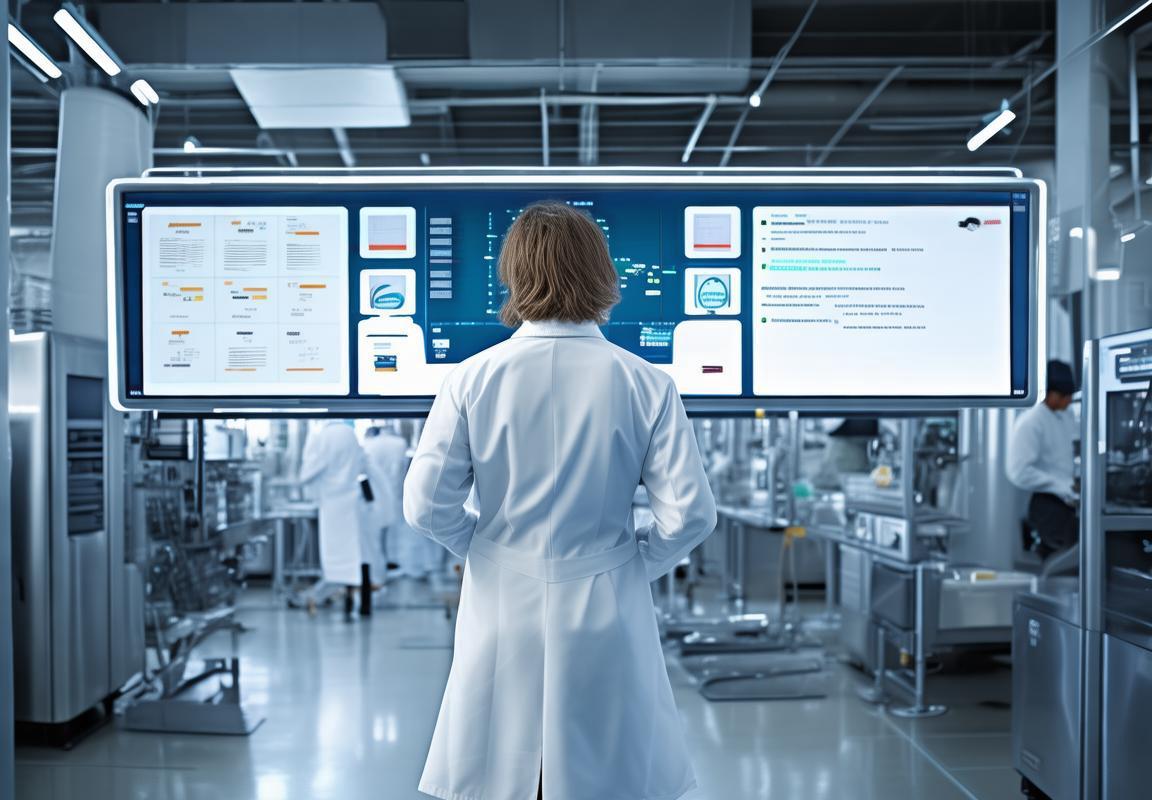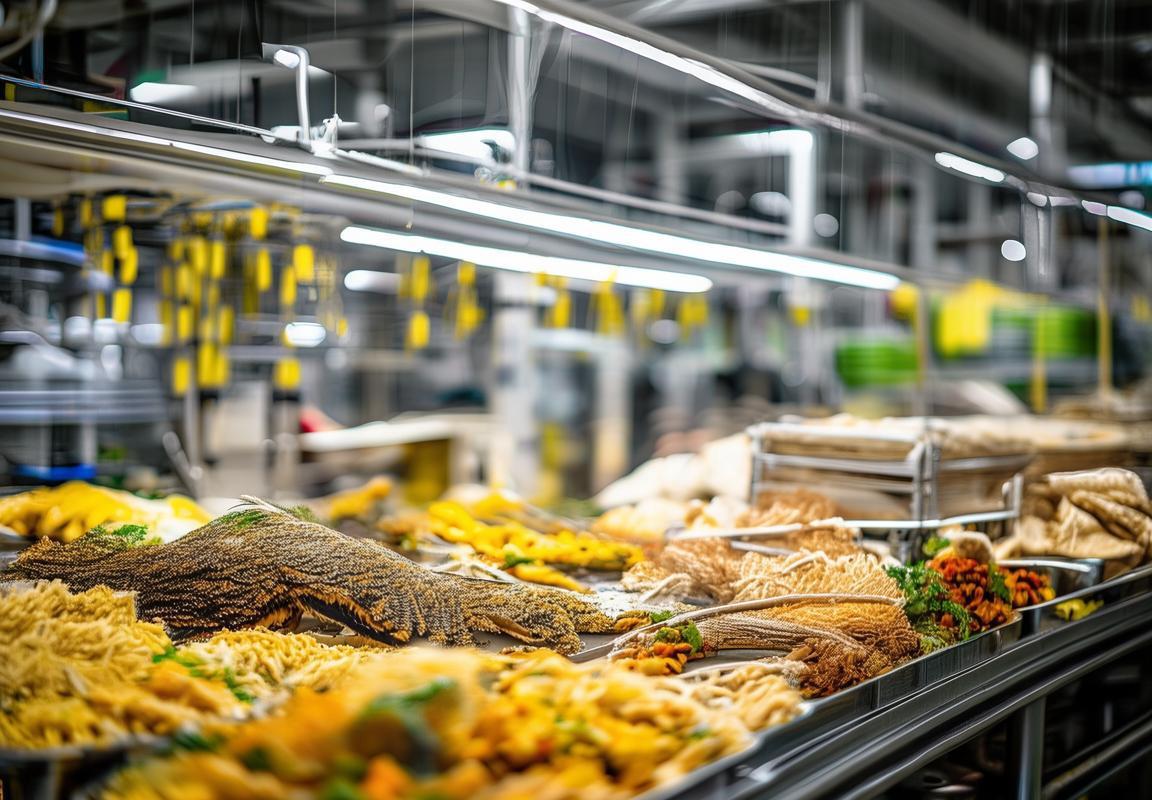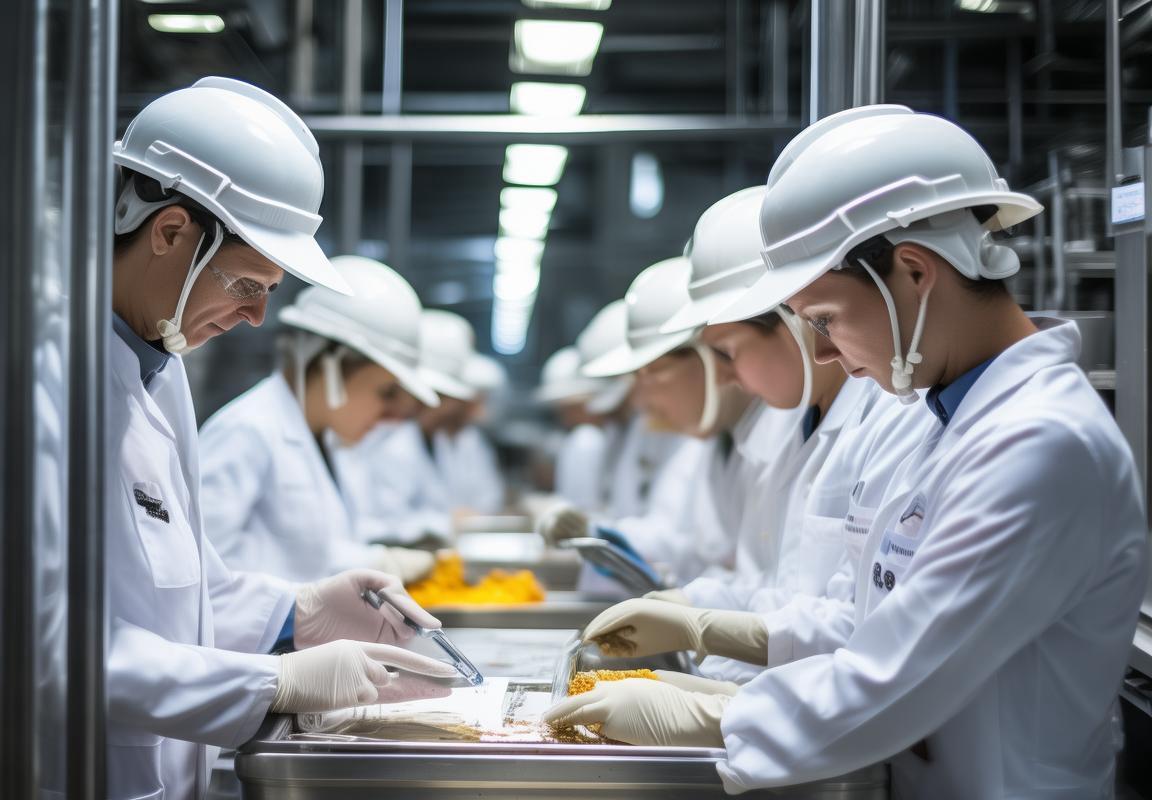Navigating the complex landscape of food production, it’s essential for factories to uphold stringent safety standards. This journey to ensure consumer well-being often involves embracing global benchmarks, like ISO 22000, which has become a cornerstone in food safety management. In this exploration, we delve into the significance of ISO 22000, the nuts and bolts of a food safety factory, the transformative impact of certification, and the inspiring stories that showcase its success. As we look to the horizon, we ponder the future of food safety in the factory setting and the evolving strategies that will shape our industry.
The Importance of ISO 22000 in Food Safety Management
ISO 22000, a globally recognized standard, plays an indispensable role in ensuring the safety and quality of food products throughout the supply chain. This certification goes beyond mere compliance; it’s a commitment to excellence in food safety management. The importance of ISO 22000 in food safety management is multifaceted, affecting every aspect of a food factory’s operations.
At its core, ISO 22000 is designed to help organizations identify, control, and prevent food safety hazards. By adhering to this standard, food factories can significantly reduce the risk of foodborne illnesses, thereby protecting consumers and their reputation. The standard is not just about meeting regulatory requirements; it’s about fostering a culture of food safety that permeates every level of the organization.
One of the key benefits of ISO 22000 is its comprehensive approach. It integrates the principles of HACCP (Hazard Analysis and Critical Control Points) with prerequisite programs that address food safety fundamentals. This holistic method ensures that all aspects of food production, from raw material handling to final product delivery, are scrutinized for potential hazards.
Implementing ISO 22000 encourages food factories to take a proactive stance in managing food safety. It requires a thorough risk assessment, which helps identify potential hazards at each stage of the production process. By implementing controls at these critical points, factories can prevent contamination and ensure that their products are safe for consumption.
The standard also emphasizes the importance of communication and documentation. Effective communication channels between different departments and stakeholders are crucial for the smooth flow of information regarding food safety. Documentation, on the other hand, serves as a record of the factory’s food safety practices, making it easier to trace any issues back to their source and take corrective actions.
Another significant aspect of ISO 22000 is the emphasis on management commitment and continuous improvement. This means that food safety is not just a responsibility of the quality control department; it’s a shared responsibility across the entire organization. Management must demonstrate its dedication to food safety by allocating resources, setting clear objectives, and regularly reviewing the effectiveness of food safety practices.
For food factories, achieving ISO 22000 certification can lead to several tangible benefits. First and foremost, it enhances consumer trust. When consumers see the ISO 22000 logo on a food product, they know that the factory has undergone rigorous scrutiny to ensure the safety of the food. This can boost sales and customer loyalty.
Moreover, ISO 22000 can improve operational efficiency. By implementing standardized procedures and controls, food factories can reduce waste, minimize downtime, and streamline production processes. This not only saves costs but also enhances the overall quality of the food products.
Certification also provides a competitive edge in the market. As more consumers and retailers demand proof of food safety, having ISO 22000 certification can give a factory an advantage over competitors who have not yet embraced these standards. It also opens up opportunities for new markets, especially those with strict food safety regulations.
Furthermore, ISO 22000 ensures compliance with international standards. This is particularly important for food factories that export their products globally. By adhering to a standard that is recognized worldwide, factories can avoid the complexities of meeting various national regulations and ensure that their products meet the highest international standards.
In conclusion, the importance of ISO 22000 in food safety management cannot be overstated. It is a benchmark for excellence that goes beyond regulatory compliance, fostering a culture of safety, and providing a roadmap for continuous improvement. For food factories, embracing ISO 22000 is not just about meeting requirements; it’s about creating a foundation for sustainable success in a highly competitive industry.

Understanding the Food Safety Factory: A Closer Look
In the world of food production, the concept of a food safety factory is paramount. These facilities are not just places where food is made; they are fortresses of hygiene and safety, ensuring that every product that leaves the premises is not just delicious but also free from contaminants. A closer look reveals several critical aspects that define and differentiate a food safety factory from its counterparts.
The design of a food safety factory is meticulously planned to minimize the risk of cross-contamination. From the moment ingredients enter the facility, they are handled with the utmost care. The layout is designed to create a one-way flow, ensuring that raw materials, ingredients, and finished products all move in a direction that prevents any backtracking or accidental mixing. This often means separate entry and exit points for different categories of food items.
Cleanliness is not just a word but a culture within these factories. The hygiene standards are stringent, with regular cleaning and sanitizing routines that are second nature to every employee. Specialized cleaning agents and techniques are used to eliminate any potential hazards, and the entire workforce is trained to understand the importance of maintaining a clean environment at all times.
Advanced technology plays a pivotal role in maintaining food safety. Modern food safety factories are equipped with cutting-edge systems for monitoring and controlling the environment. This includes temperature and humidity control, air filtration systems, and even automated cleaning robots that can navigate the factory floors to sanitize equipment and surfaces without human intervention.
Food safety protocols are not just a checklist but a living document that is updated regularly. These factories adhere to strict regulations, such as those outlined by the Food and Drug Administration (FDA) and the European Union’s General Food Law. They also often implement ISO 22000, a globally recognized standard for food safety management systems. This certification ensures that the factory has a comprehensive approach to food safety, from procurement to delivery.
The workforce in a food safety factory is not just a collection of laborers; they are trained professionals who understand the gravity of their role. From the moment they start their shift, they are reminded of the importance of following procedures. This training extends beyond just the basics of food handling; it covers the nuances of the specific products being processed and the unique challenges they present.
One of the most significant aspects of a food safety factory is its approach to food defense. This involves identifying and mitigating risks that could compromise the safety of the food supply. This can range from physical contamination, like insects or metal fragments, to chemical hazards or even intentional tampering. The factory must have robust systems in place to detect and respond to these threats promptly.
In terms of documentation, a food safety factory is a treasure trove of records. Every aspect of the production process is documented, from the receipt of raw materials to the final inspection of the product. This documentation is not just for compliance purposes but also for traceability. In the event of a recall, the factory can quickly identify which batches are affected and take appropriate action.
Regular audits and inspections are a normal part of life in a food safety factory. Internal audits ensure that all procedures are being followed correctly, while external audits, often conducted by certification bodies, verify compliance with relevant standards. These audits help identify any gaps in the system and provide a roadmap for continuous improvement.
The packaging process is another critical component of a food safety factory. Packaging materials are chosen carefully to protect the product from external contaminants and to maintain its integrity until it reaches the consumer. The packaging line is designed to minimize human contact, reducing the risk of contamination, and ensuring that each product is sealed securely.
Finally, a food safety factory understands the importance of supplier management. They work closely with their suppliers to ensure that all ingredients and materials meet the highest standards of quality and safety. This relationship is often built on trust and transparency, with regular visits to suppliers’ facilities to verify compliance with food safety protocols.
In essence, a food safety factory is a complex and highly regulated environment. It is a place where every detail is scrutinized, and every process is designed to protect the end consumer. The dedication to safety, cleanliness, and compliance is not just a legal requirement but a commitment to the health and well-being of the community that consumes the products they produce.

What ISO 22000 Certification Means for Your Factory
Gaining ISO 22000 certification for your factory signifies more than just a piece of paper—it’s a transformative journey that can elevate your operation to new heights. Here’s what this certification entails and how it shapes your factory’s future:
In the realm of food production, the stakes are incredibly high. Consumers expect nothing less than perfection when it comes to the safety of their food. ISO 22000 certification is a promise to meet and exceed these expectations. It’s a globally recognized standard that ensures your factory has the systems in place to control food safety risks from raw materials to the final product.
This certification process demands a thorough examination of your factory’s food safety management system (FSMS). It’s not just about having the right equipment or following guidelines; it’s about integrating food safety into the very fabric of your operation. This means that every employee, from the maintenance crew to the top management, must be committed to maintaining the highest safety standards.
One of the key aspects of ISO 22000 is the Hazard Analysis and Critical Control Points (HACCP) system. This is a proactive approach to food safety that requires identifying potential hazards and implementing controls to minimize or eliminate them. It’s not just about preventing issues but also about having a structured way to manage any risks that do arise.
When your factory achieves ISO 22000 certification, it demonstrates a commitment to quality and safety. This can have several tangible benefits:
- Consumer Trust: Consumers are more likely to choose products from a factory with ISO 22000 certification. They see it as a sign that the factory has rigorous safety measures in place.
- Market Access: Many international markets require or prefer suppliers with ISO 22000 certification. This certification can open doors to new customers and markets.
- Operational Efficiency: Implementing ISO 22000 can lead to streamlined processes and improved efficiency. By identifying and addressing inefficiencies, factories can reduce waste and save costs.
- Regulatory Compliance: ISO 22000 certification ensures that your factory is compliant with relevant food safety regulations, reducing the risk of legal issues and recalls.
The certification process itself involves several steps:
- Preparation: Your factory must conduct an internal audit to evaluate its current food safety practices against ISO 22000 requirements. This often involves training staff and updating procedures.
- Gap Analysis: Identify areas where your current system falls short of the ISO 22000 standard. This could include inadequate documentation, training, or control measures.
- Implementation: Develop a plan to address the gaps and implement the necessary changes. This might involve revising processes, investing in new equipment, or updating training programs.
- Certification Body Audit: An external auditor from a certification body will assess your factory to ensure it meets all the requirements of ISO 22000. This audit is comprehensive and can take several days.
- Continual Improvement: Once certified, your factory must demonstrate ongoing compliance through regular internal audits and annual surveillance audits by the certification body.
Maintaining ISO 22000 certification is an ongoing process. It requires a culture of continuous improvement, where food safety is a priority at all levels of the organization. This means regularly reviewing and updating your FSMS, addressing any new risks that may arise, and keeping up with the latest industry standards and best practices.
In essence, ISO 22000 certification for your factory is a testament to your dedication to food safety. It’s a mark of excellence that not only protects your customers but also protects your reputation and your business. It’s a journey that may be challenging, but the rewards—both in terms of safety and success—are well worth the effort.

Key Elements of ISO 22000: A Guided Tour
ISO 22000, a globally recognized standard, is a comprehensive framework designed to ensure food safety across the supply chain. Navigating its key elements is like taking a guided tour through a factory’s commitment to safety and quality. Here’s an in-depth look at what each aspect entails:
-
Pre-requisite Programs: Before diving into the specifics of food safety, a factory must establish and maintain pre-requisite programs. These are the foundational systems that include personnel hygiene, sanitation, pest control, and building maintenance. They form the backbone of a food safety factory, ensuring that the basic conditions are met to prevent contamination and maintain a clean environment.
-
Hazard Analysis and Critical Control Points (HACCP): HACCP is the cornerstone of ISO 22000. It involves identifying, evaluating, and controlling food safety hazards. A factory must conduct a thorough hazard analysis, determining critical control points where these hazards can be prevented, eliminated, or reduced to an acceptable level. This systematic approach ensures that every step in the food production process is monitored and managed.
-
Management Responsibility: ISO 22000 emphasizes the role of top management in ensuring food safety. This means that the factory must have a clear food safety policy, with management actively involved in setting objectives, providing resources, and ensuring that the food safety system is effectively implemented and maintained.
-
Communication: Effective communication is vital in a food safety factory. This includes internal communication within the organization, as well as communication with suppliers, customers, and regulatory authorities. It ensures that everyone involved understands their roles and responsibilities, and that any issues or changes are promptly addressed.
-
Documentation: Documentation is the lifeblood of ISO 22000. A factory must maintain comprehensive records of its food safety system, including procedures, records of monitoring activities, and any corrective actions taken. This not only helps in maintaining compliance but also serves as a valuable resource for continuous improvement.
-
Training: Ensuring that employees are adequately trained is crucial. Training programs should cover the food safety system, including HACCP principles, hygiene practices, and the importance of their role in maintaining food safety. Regular training helps in keeping the workforce informed and vigilant.
-
Validation and Verification: Validation ensures that the food safety system is effective, while verification confirms that it is being properly implemented. This involves regular checks and audits to ensure that controls are working as intended and that the system is meeting its objectives.
-
Prerequisite Programs and Prerequisite Programs for Food Safety: These are the basic hygiene and sanitation practices that must be in place to support the HACCP system. They include practices such as cleaning and sanitation procedures, employee health and hygiene, and pest control measures.
-
Food Safety Plan: A factory must develop a food safety plan that outlines the specific requirements of ISO 22000. This plan should be dynamic, allowing for adjustments as new risks are identified or as the business evolves.
-
Continuous Improvement: ISO 22000 is not a one-time achievement but a continuous journey. A factory must be committed to ongoing improvement, regularly reviewing and updating its food safety system to address new challenges and changing regulations.
-
Emergency Preparedness: Planning for emergencies is essential. This includes having procedures in place for dealing with food safety incidents, power failures, and other unforeseen events that could impact food safety.
-
Traceability: The ability to trace food products back through the supply chain is critical. A factory must have systems in place to track ingredients, processes, and finished products, ensuring that any issues can be quickly identified and addressed.
By understanding and implementing these key elements, a factory not only ensures compliance with ISO 22000 but also demonstrates a strong commitment to food safety, which is invaluable to consumers, partners, and stakeholders alike.

Implementing ISO 22000: A Step-by-Step Guide
Navigating the path to ISO 22000 certification can be a transformative journey for any food factory. Here’s how to embark on this step-by-step guide to ensure a smooth transition:
-
Conduct a Comprehensive AssessmentBegin by conducting a thorough assessment of your current food safety practices. This includes reviewing your existing systems, processes, and procedures to identify any gaps or areas that need improvement. Engage your team in this process to gather insights from all levels of the organization.
-
Understand the Scope of ISO 22000Familiarize yourself with the ISO 22000 standard, which is designed to help organizations ensure the safety of food products. This involves understanding the principles of food safety management and how they apply to your specific factory environment.
-
Develop a Food Safety Management System (FSMS)Create a FSMS that aligns with the requirements of ISO 22000. This system should be tailored to your factory’s unique operations and should encompass all aspects of food safety, from the sourcing of raw materials to the delivery of finished products.
-
Establish a HACCP-Based SystemImplement a Hazard Analysis and Critical Control Points (HACCP) system, which is a cornerstone of ISO 22000. Identify potential hazards in your food manufacturing process and establish control measures to prevent or reduce them. Regularly review and update your HACCP plan to adapt to any changes in your processes.
-
Train Your EmployeesTraining is crucial for ensuring that everyone in your factory understands their roles and responsibilities in maintaining food safety. Develop a comprehensive training program that covers all aspects of the ISO 22000 standard and ensure that employees are adequately trained and competent.
-
Document Your SystemDocumentation is key to proving compliance with ISO 22000. Create a comprehensive set of procedures, work instructions, and records that document your food safety management system. Ensure that these documents are easily accessible and regularly reviewed for accuracy and effectiveness.
-
Conduct Internal AuditsRegular internal audits are essential to monitor the effectiveness of your FSMS. These audits should be conducted by trained personnel and should cover all aspects of your food safety processes. Use the findings from these audits to identify areas for improvement and take corrective actions as needed.
-
Prepare for External AuditingOnce your internal audits demonstrate that your FSMS is functioning effectively, it’s time to prepare for the external audit. This audit will be conducted by a certification body and will assess whether your system meets the requirements of ISO 22000. Ensure that all documentation is in order and that your team is prepared to demonstrate compliance.
-
Address Non-ConformitiesIf any non-conformities are identified during the external audit, address them promptly. This may involve revising processes, updating documentation, or providing additional training. The goal is to demonstrate a commitment to continuous improvement and compliance with the standard.
-
Maintain CertificationAfter successfully passing the external audit, you will receive ISO 22000 certification. This is not the end of the journey; it’s the beginning of maintaining certification. Regularly review your FSMS, conduct audits, and implement any necessary changes to ensure ongoing compliance with the standard.
-
Communicate with StakeholdersKeep all stakeholders informed about your ISO 22000 certification and the efforts you are making to maintain food safety. This includes customers, suppliers, regulatory authorities, and employees. Effective communication can build trust and enhance your reputation in the industry.
-
Embrace Continuous ImprovementThe journey to ISO 22000 certification is not a one-time event; it’s about continuous improvement. Regularly review your food safety management system, seek feedback from employees and customers, and stay updated on any changes in regulations or best practices to ensure that your factory remains at the forefront of food safety standards.

The Benefits of ISO 22000 Certification for Your Food Factory
Navigating the waters of food safety can be tumultuous, but obtaining ISO 22000 certification can be a beacon of assurance for your factory. This international standard is tailored to the food industry, ensuring that your processes are not only safe but also reliable. Here’s how this certification can transform your food factory:
Enhanced Consumer Trust: Your customers rely on you to deliver safe and quality food products. ISO 22000 certification signifies that you have undergone a rigorous audit to confirm your adherence to stringent food safety practices. This certification can reassure consumers that your products are safe to consume, potentially leading to increased loyalty and repeat business.
Improved Supply Chain Management: The certification process requires a comprehensive review of your entire supply chain. From suppliers to production facilities, this holistic approach ensures that every link in the chain is secure and meets the highest standards. This can lead to better relationships with suppliers, as they too may need to adhere to food safety standards to do business with you.
Risk Management with a Strategic Focus: ISO 22000 emphasizes the importance of risk-based thinking. Your factory will be required to identify potential hazards, assess and control risks, and continually improve your safety management system. This proactive approach not only minimizes the risk of foodborne illness but also helps in preventing costly recalls and product damage.
Global Market Access: In an increasingly globalized market, having ISO 22000 certification can open doors to new markets. Many countries recognize this standard as a benchmark for food safety, making it easier for your products to pass regulatory inspections and enter new territories without the need for additional certification.
Increased Efficiency and Cost Reduction: While the initial investment in obtaining ISO 22000 certification can be significant, the long-term benefits often outweigh the costs. By streamlining processes and ensuring that your factory operates within a safe environment, you can reduce waste, minimize downtime, and improve overall efficiency. This can lead to cost savings and a more sustainable operation.
Training and Competence: The standard mandates that your workforce is trained and competent in food safety practices. This not only ensures that your employees understand the importance of their roles in maintaining food safety but also enhances the overall quality of your products. A well-trained team is more likely to follow safety protocols, reducing the risk of errors and accidents.
Legal Compliance and Reduced Litigation: Adhering to ISO 22000 helps you stay compliant with local and international food safety regulations. This can protect your factory from legal action and the associated costs of litigation. It also demonstrates to regulatory bodies that you take food safety seriously, which can result in a more favorable relationship with these authorities.
Building a Sustainable Brand: Consumers are more aware than ever of the importance of sustainable and ethical practices. ISO 22000 certification can be a key component in building a strong brand that resonates with environmentally conscious consumers. It shows that your factory is committed to the well-being of its customers and the planet.
Long-Term Business Planning: Obtaining ISO 22000 certification requires a thorough analysis of your operations. This introspection can lead to long-term strategic planning, as you may identify areas for growth and improvement. By aligning your operations with an internationally recognized standard, you position your factory for sustainable growth and adaptability to changing market demands.
Innovation and Continuous Improvement: The standard encourages a culture of innovation and continuous improvement. By constantly reviewing and updating your food safety management system, you can stay ahead of the curve in an industry where new threats and challenges can arise quickly. This proactive stance can lead to innovative solutions that give your factory a competitive advantage.
In summary, ISO 22000 certification is not just a piece of paper; it’s a transformative journey that enhances every aspect of your food factory. From consumer trust to global market access and beyond, the benefits are multifaceted and can set your factory on a path to excellence in food safety management.

Case Studies: Real-Life Success Stories from Food Safety Factories
In the bustling world of food production, several factories have navigated the complex path to achieving ISO 22000 certification. Here are some real-life success stories that showcase how these factories transformed their operations for the better.
A factory in Italy, known for its high-quality dairy products, embarked on the journey to ISO 22000 certification. They started by conducting a thorough assessment of their existing food safety management system. This process revealed gaps and areas for improvement, leading to the implementation of stricter controls over their supply chain, from raw material sourcing to final product dispatch. The result? A noticeable reduction in product recalls and a significant boost in customer satisfaction.
Another case comes from a meat processing plant in the United States. Before certification, the plant faced several quality control issues that threatened their reputation. The introduction of ISO 22000 guidelines allowed the team to adopt a more systematic approach to managing food safety. By implementing a Hazard Analysis and Critical Control Points (HACCP) system, they were able to pinpoint the root causes of their problems and implement corrective actions. The outcome was a safer product, happier customers, and an increased market share.
A bakery in the UK, known for its specialty pastries, struggled with consistency and quality control. The bakery team decided to embrace ISO 22000 to streamline their processes and ensure the highest standards were met at every stage. Through the certification process, they integrated a comprehensive management system that covered everything from employee training to the maintenance of their equipment. This holistic approach led to improved product quality, reduced waste, and a more efficient workforce.
A fruit juice producer in South America faced challenges with bacterial contamination. After certifying to ISO 22000, the company overhauled its cleaning protocols, sanitation practices, and supplier management. The new system ensured that the raw fruits were handled safely, reducing the risk of spoilage and illness. The result was a product that was not only safe but also fresher and more appealing to consumers, which ultimately boosted sales.
A seafood processing plant in Japan had a long-standing issue with water quality affecting the fish they processed. Implementing ISO 22000 helped them to establish a robust water management system, ensuring that their product met the highest hygiene standards. The certification process also prompted them to invest in better storage facilities and to train their staff more rigorously on food safety practices. The outcome was a product that was not only safe but also maintained its freshness, which was a key selling point for the company.
In each of these cases, the path to ISO 22000 certification was not without its challenges. However, the dedication and commitment of the management and staff paid off, leading to tangible benefits that included:
- Enhanced brand reputation and customer loyalty.
- Reduced risks of foodborne illnesses and product recalls.
- Improved operational efficiency through better process control.
- Compliance with international food safety standards, which opened up new markets.
- Increased employee engagement and training, leading to a more skilled workforce.
These success stories are a testament to the power of ISO 22000 certification in transforming food safety practices within factories. By adopting a systematic approach to managing food safety, these companies were able to deliver on their promises of quality and safety, ultimately leading to business growth and sustainability.

Conclusion: The Future of Food Safety in the Factory Setting
In the ever-evolving landscape of food production, the factory setting stands as a cornerstone of the global food supply chain. As such, ensuring food safety is not just a regulatory requirement but a critical component of a factory’s reputation and success. The future of food safety in the factory setting is shaped by numerous factors, from technological advancements to shifts in consumer expectations. Here’s a glimpse into what lies ahead.
The integration of smart technology is set to revolutionize food safety protocols. Sensors, AI, and automation are already making waves, providing real-time data and predictive analytics that can identify and prevent safety issues before they become problems. Imagine a factory where the entire production line is monitored by a network of sensors that can detect temperature fluctuations, bacterial growth, or even packaging integrity issues—prompting immediate action without human intervention.
Consumer awareness and demand for transparency are on the rise. Today’s consumers are not just looking for safe food; they want to know how and where it was made. This demand for traceability is pushing factories to invest in technologies that can provide a clear audit trail from the farm to the factory floor. The future factory will be one where the consumer’s right to know is a cornerstone of its operations.
Regulatory frameworks are also evolving to keep pace with industry changes. Governments around the world are recognizing the importance of international standards like ISO 22000 in ensuring food safety. As these standards become more ingrained in legal requirements, factories will be under increased pressure to comply. This could lead to a more standardized approach to food safety across the globe, making it easier for companies to operate on an international scale.
Education and training will play a pivotal role in shaping the future of food safety. Employees will need to be more knowledgeable than ever about safety protocols and the latest food safety practices. Factories that invest in continuous education and training programs will be better equipped to adapt to new challenges and maintain compliance. The future factory will be a place where learning is a part of the daily routine, not a one-time event.
Collaboration between stakeholders will become more crucial. Food safety is not just the responsibility of the factory; it encompasses suppliers, distributors, and retailers. The future will see a greater emphasis on the importance of supply chain management, with all parties working together to ensure that safety standards are met at every stage. This could lead to the development of new tools and platforms that facilitate communication and coordination among all participants.
Sustainability will also be a key consideration. As concerns over environmental impact grow, factories will need to balance food safety with sustainable practices. This could involve using eco-friendly packaging, reducing waste, and optimizing energy usage. The factory of the future will not only prioritize the safety of the food it produces but also its impact on the planet.
Lastly, the rise of new food technologies, such as genetically modified organisms (GMOs) and lab-grown meat, will present both opportunities and challenges. Factories will need to navigate these new frontiers while ensuring that safety standards are maintained. The future will require a careful balance between innovation and consumer acceptance, with a strong emphasis on transparency and ethical considerations.
In conclusion, the future of food safety in the factory setting is complex, dynamic, and multifaceted. It will be characterized by a relentless pursuit of innovation, a deep commitment to consumer trust, and a collaborative approach to ensuring that every step of the food production process is safe and sustainable. As factories adapt to these changes, they will not only protect the health of consumers but also secure their own place in the global marketplace.